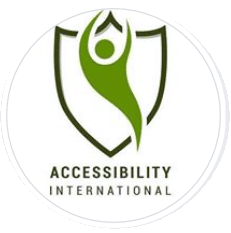Are Non Profit Home Pages Web Accessible?
As we digest what the WebAIM Million Home Page analysis means for disability equity in our largely digital world, WebAIM has been asking if we should expect to see accessibility differences across market sectors.
I believe that awareness drives action, so those in a disability field and those with roots in civil justice or diversity should have better web accessibility. However, WebAIM has performed some sector evaluations where this was found to not always be the case.
For example, WebAIM collected 3 years of longitudinal research on the websites of the national network of University Centers for Excellence in Developmental Disability (UCEDD), along with their host universities, and their state governments.
In this research we hypothesized that the disability network sites would fare better than the others, because of their stated mission that includes disability. They did not. We have presented on some of these data elsewhere (e.g., 3PlayMedia Webinar; CSUN 2019).
This made me think about the nonprofit sector, where many organizations are very aware of social issues and work hard to be inclusive, if for no other reason than to make sure patrons have access to online content and donation opportunities.
So, should we expect the nonprofit world to have a greater degree of sensitivity, awareness, and action to include those with disabilities? In 2018, Washington & Feng published research showing that inaccessibility was pervasive among the 48 nonprofit websites in their sample.
WebAIM has completed 2 rounds of research taking a peek at the accessibility of homepages in the nonprofit space. In the spirit of adding to a developing research base, we want to share those findings here. I will share the most recent (2019) findings, whose methodology aligned with the WebAIM Million.
What We Examined
We first needed to identify a sample from the thousands of nonprofits throughout the country. The nonprofit world is certainly diverse. There are some very large nonprofits that have dedicated internal web resources, and others that take on a mom-and-pop persona for the work they accomplish in their community.
We decided to look at nonprofits that had some heft, and those that were viewed within the nonprofit community as getting some traction regardless of the size of their web presence. Because of this we used the TopNonProfits website list for the Top 100 Nonprofits On the Web.
In April of 2019 we used the WAVE stand-alone API to analyze only the home pages of these 100 organizations. We looked only at automatically detectable errors, which we realize returns a conservative result.
In other words, the actual accessibility issues are likely much more prevalent than what is found here because we did not perform any manual testing. It is very important to note that the absence of errors on a site in this research does not mean that a site is accessible.
This only means that the home page did not contain the types of errors WAVE detects automatically. We used the same method described in the WebAIM Million. The same caveats regarding only the home pages also apply.
What We Discovered About WCAG 2 Conformance
In our sample, 98 of the 100 nonprofit homepages contained WCAG conformance failures that WAVE automatically detected. Tools like WAVE can only detect about a quarter of possible WCAG 2 errors, but can provide a broad measure of inaccessibility. This also means that the actual WCAG conformance rate for these pages is well below 2%.
What Error Counts Were Discovered?
The number of errors that a user encounters on a single page is important. In this sample, WAVE automatically detected 4,965 errors, with a range of 0-174 errors on a page. The median number of errors in this sample was 43 on a homepage (i.e., number of errors on the 50th page in the sample) while the mean was 49 per page. One would expect to find a detectable error on one of every 18 elements on a home page. The 49 average errors per page was better in this sample of 100 nonprofits than in the WebAIM Million where there was an average of nearly 60 errors per page. Both samples show that around 98% of the pages themselves have detectable WCAG 2 failures.
What Home Page Errors Occurred?
By far, most errors occurred across 5 types:
| WCAG Failure | Average errors per home page |
|---|---|
| Low contrast text | 31.1 |
| Missing alternative text | 6.6 |
| Empty link | 5.6 |
| Missing input label | 2.6 |
| Empty button | 2.0 |
Where Do We Go From Here?
This research underscores the need for nonprofits to pay attention to web accessibility. The result is disappointing when 98 of 100 pages have automatically detectable errors; these are the low hanging fruit of the web accessibility world. With that said, having data on error types is useful. If effort was put into fixing only these five types, a tremendous positive outcome would be likely.
As I reflect on this research, I am reminded of Jared Smith’s call to action after the publication of the WebAIM Million report – “So, what are YOU going to do about it?” At WebAIM, we are working now with the MacArthur Foundation to assist nonprofits. We are writing an action paper to motivate nonprofits to act, and to describe techniques they can use to improve web accessibility. So, what will YOU do with information from this research? Hopefully you will share it with those in the nonprofit sector. I hope when we look at this data in the future we see positive trends that are consistent with the overarching values of diversity and inclusion that come from that sector.




